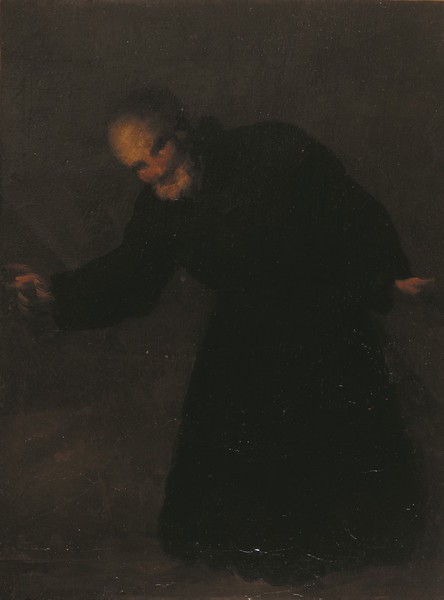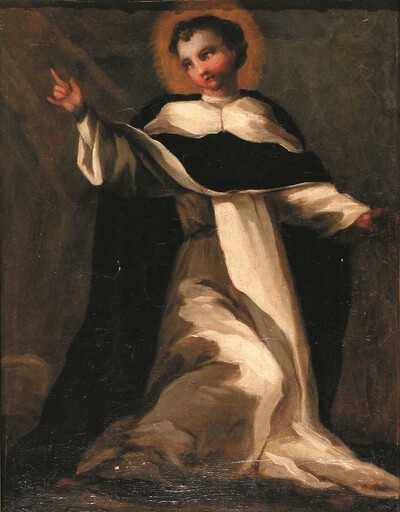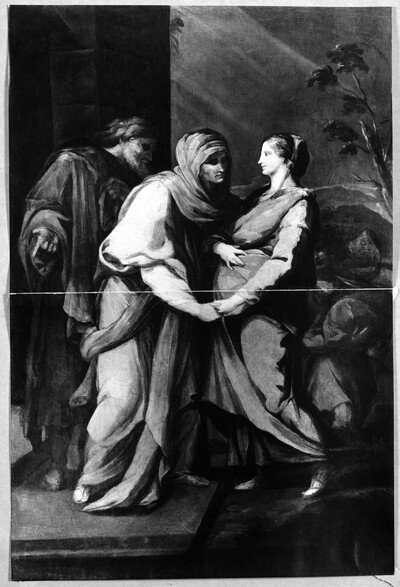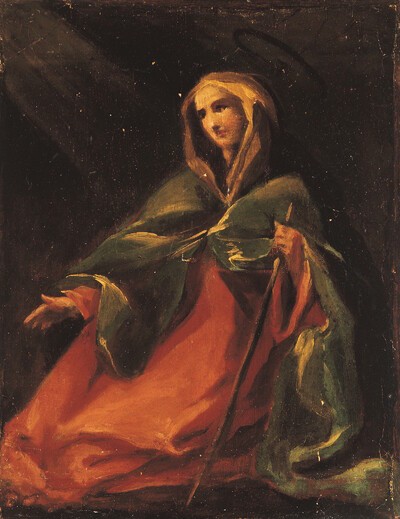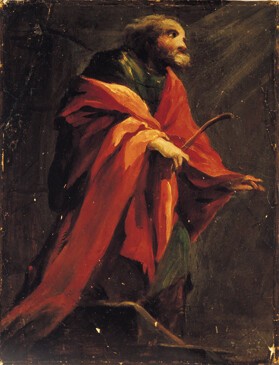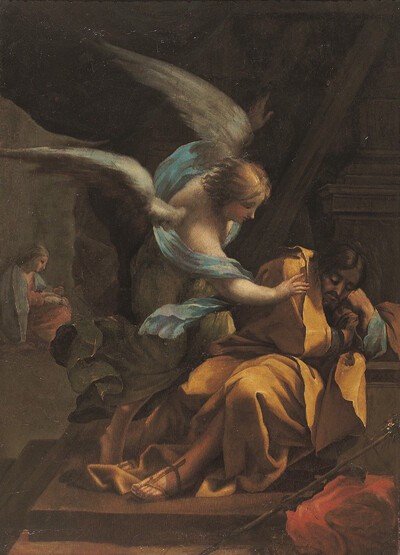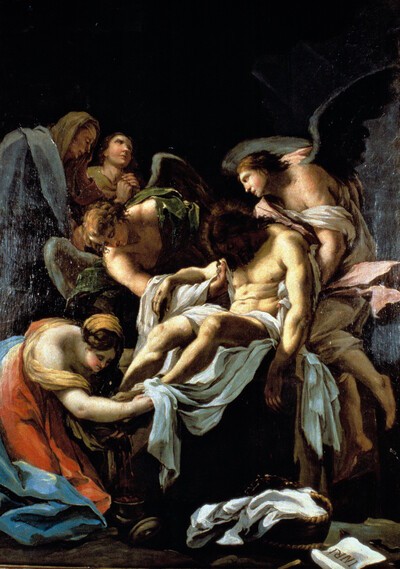- Cronología
- Ca. 1771 - 1773
- Ubicación
- Museum of Zaragoza, Zaragoza, Spain
- Dimensiones
- 37 x 30 cm
- Técnica y soporte
- Oil mural painting transferred to canvas
- Reconocimiento de la autoría de Goya
- Documented work
- Titular
- Government of Aragon
- Ficha: realización/revisión
- 07 Oct 2010 / 11 Dec 2024
- Inventario
- (51360)
Some time before 1926, the painting was lifted from the wall and transferred to canvas on the orders of Joaquín Cavero Sichar, Count of Gabarda. After his death, the Countess deposited the painting in the Provincial Museum of Zaragoza in 1929. The following year it was acquired by the Cuban Carlos Francisco Javier del Valle Grao, who removed the paintings deposited in the museum in 1932 and took them with him to La Habana in Cuba. The work then passed to the Marchioness of Rivas, who left it in her will to her son, José María Olabaria de Martínez de las Rivas. From there it passed on to another collection in Bilbao in 1973 before finally being acquired by the Government of Aragón in 1997.
From December 5th, 2024, and while the Zaragoza Museum remains closed for works, the painting is part of the exhibition 'Goya. From the Museum to the Palace' in the Aljafería Palace in Zaragoza.
For further information see The Dream of Saint Joseph.
According to a written description by Ricardo del Arco (1915), this composition was located at one of the far ends of the front wall of the oratory.
This saint was included in the iconographic programme for the oratory because his name corresponds with the second name of the Count of Sobradiel, who very probably owed the title to the proximity of his palace to the church of the Theatine Fathers devoted to Saint Cajetan.
The saint is represented in his old age, kneeling in an act of veneration with his body leaning forward and his right hand raised. He is shown in a three-quarters pose facing the viewer's left. The figure is depicted in a particularly dark and disquieting setting which is accentuated by the dark hues of his habit, lightened only by the flesh tones of his face and hands.
As in the case of the other three small format paintings, this work is characterized by energetic, sketchy brushstrokes which are somewhat careless but extremely expressive and lend the figures an impressive sense of volume through the use of light and colour.
For further information see The Dream of Saint Joseph.
-
Exposición de obras de Goya y de objetos que recuerdan las manufacturas artísticas de su épocaMuseo de ZaragozaZaragoza1928organized by la Real Academia de Nobles y Bellas Artes de San Luis in collaboration with the Junta del Patronato del Museo Provincial. April 1928núm. 6-8, 10,12,13
-
Goya y el Palacio de SobradielMuseo de ZaragozaZaragoza2006organized by Gobierno de Aragón at the Museo de Zaragoza, consultant editor Juan Carlos Lozano López. From December 15th 2006 to February 4th 2007cat. 32
-
Goya. From the Museum to the PalaceZaragoza2024cat.87
-
Pinturas de Goya (inéditas) en el palacio de los condes de Sobradiel de ZaragozaBoletín de la Sociedad Española de Excursiones1915pp. 124-131
-
Goya pintor religioso. (Precedentes italianos y franceses)Revista de Ideas EstéticasMadrid1946pp. 277-306
-
Cuadros de Goya en el Museo Lázaro,Seminario de Arte AragonésZaragoza1952p. 3
-
“Anotaciones al Goya joven”Paragone1954pp. 5-28
-
Les peintures de Goya dans la chapelle du palais des Comtes de Sobradiel à SaragosseRevue des ArtsParís1954pp. 215-222
-
Vie et ouvre de Francisco de GoyaParísOffice du livre1970pp. 81, cat. 16
-
BarcelonaPolígrafa1970vol. I, p. 238, cat. 23
-
Goya en AragónEditorial Everest1970p. 20
-
Goya en ZaragozaZaragozaAyuntamiento de Zaragoza1971pp. 37-46
-
Datos inéditos y precisiones iconográficas y estilísticas sobre las pinturas que decoraban el oratorio del palacio de los condes de Sobradiel en Zaragoza, originales de Francisco de GoyaArchivo Español de Arte1990pp. 59-67
-
Goya. Pintor religiosoDiputación General de Aragón1990pp. 70 y ss.
-
Goya y Aragón. Familia, amistades y encargos artísticoscol. Col. Mariano de Pano y RuataZaragozaCaja de Ahorros de la Inmaculada de Aragón1995pp. 94-98.
-
Goya y el Palacio de SobradielZaragozaGobierno de Aragón, Dpto. de Educación, Cultura y Deporte2008passim (esp. pp. 276-277, cat. 32)
-
Goya y Zaragoza (1746-1775). Sus raíces aragonesasZaragozaFundación Goya en Aragón, Ibercaja y Gobierno de Aragón2015pp. 63-66
-
Goya. From the Museum to the PalaceZaragozaZitro Comunicación2024pp.86-87
